– Establishment of the Process of the “Development of Cities in Harmony with Transportation”, Including Simulation, Social Experiments, and Evaluation –
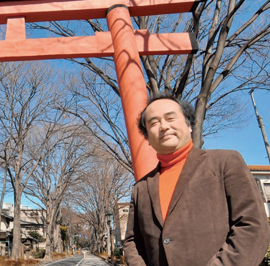
Omiya Hikawa Sando reconstructed into a pedestrian-friendly street as a result of the process of the “development of cities in harmony with transportation” over ten years
Although automobiles are very familiar to us and essential in society, only fifty years have passed since they became established in Japan. Further efforts are required to promote the development of desirable cities and pedestrian-friendly roads based on the premise of a car-oriented society.
I have been interested in streets in the car-oriented society, and conducting research to help develop streets that are appropriate for each specific region in collaboration with the citizens. It requires more than the knowledge in the fields of traffic engineering and urban planning as narrowly defined to address this issue. It is essential to discuss the issue from the viewpoints of social science, including public administration, sociology, politics, and economics, in addition to the above-mentioned fields. You should also become determined to place emphasis on both research and on-site activities by frequently visiting actual fields.
To accomplish this goal, I have been conducting this study, which I refer to as the “development of cities in harmony with transportation”, through the establishment of a process including prior assessment based on traffic simulations and social experiments.
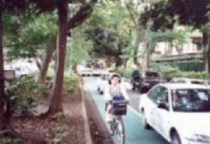
Hikawa Sando prior to reconstruction
In the first stage of the process, there should be opportunities for the citizens and government officials to assemble for discussions. In recent years, there have been an increasing number of workshop meetings, and facilitation in such meetings is also regarded as an important “skill” to promote the “development of cities in harmony with transportation”.
Traffic simulation is a system designed to simulate traffic situations on a network based on a table of Origin-Destination(OD) obtained from traffic surveys. It evaluates traffic-related measures in advance using easy-to-understand animations and statistical analysis methods. Our laboratory has been a leader in this research field among other Japanese research teams, and developed “tiss-NET”, a simulation system. After a specific level of feasibility is established for a measure by prior evaluation, social experiments are conducted to discuss measures to address traffic situations in actual social settings. I have been conducting studies on social experimental methods and assessment since I wrote my doctoral thesis on an experiment carried out on woonerf.
My research subjects also include evaluation methods used during and following the implementation of social experiments. My research particularly focuses on the limitations of attitude questionnaire surveys – a conventional and common survey method, from the following two aspects: (1) analyses of the characteristics of people who do not respond to questionnaire surveys (silent group) to determine their position, and (2) the development of a system to implement non-verbal evaluation, including attitude surveys, focusing on the expressions and motions of people.
I am determined to contribute to the development of safe, secure, and comfortable cities and towns through integration of engineering and social science while exploring for ideal streets in Japan.
Professor, Division of Environmental Science and Infrastructure Engineering, Graduate School of Science and Engineering
Born in 1958 in Yokohama City
|
March 1982 |
Graduation from Yokohama National University (civil engineering) |
|---|---|
|
March 1984 |
Completion of the Master’s Course of Graduate School (urban engineering), the University of Tokyo |
|
March 1988 |
Completion of the Doctoral Course of Graduate School, the University of Tokyo Received PhD. degree in Engineering |
|
June 1988 |
Assistant, Faculty of Engineering, Saitama University |
|
November 1989 |
Full-time Instructor,Faculty of Engineering, Saitama University |
|
October 1992 |
Associate Professor, Faculty of Engineering, Saitama University |
|
October 1997 |
Associate Professor, Graduate School of Science and Engineering, Saitama University |
|
April 2005~ |
Professor, Faculty of Engineering, Saitama University |

Current situation

Simulation of road restrictions or one-way traffic
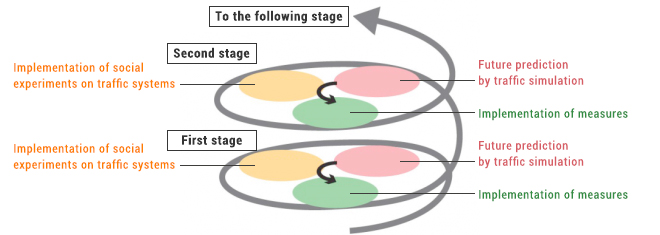
(Examples of Recent Activities)

Omiya Hikawa Sando as a one-way street

Automobiles prohibited at Shirakawa-go

Kumagaya Bicycle Road

Shizuoka Outdoor Café

Speed MM(Mobility Management) at Jindaiji

Car-free day at the West Exit of Omiya

Restricted traffic at the First Street Ichibangai of Kawagoe

Hump at Tokorozawa
Video-record the expressions of pedestrians walking on streets, and the levels of their smiles are determined and expressed in percentage terms (0 to 100%) using OKAO Vision.
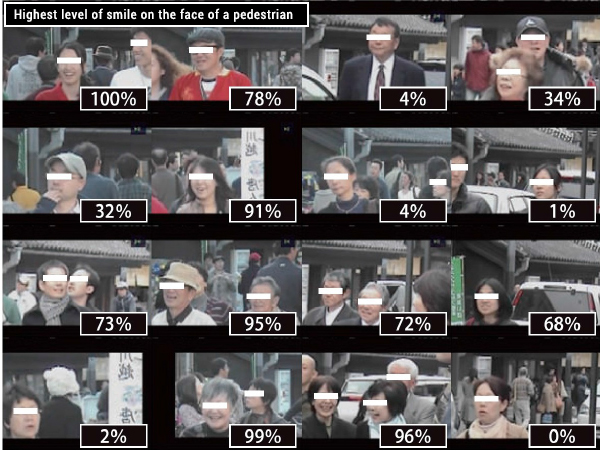
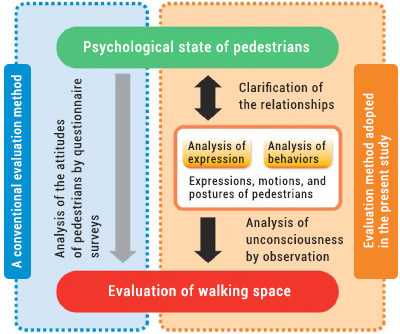
Increases in the level of smiles observed in a vehicle-free area
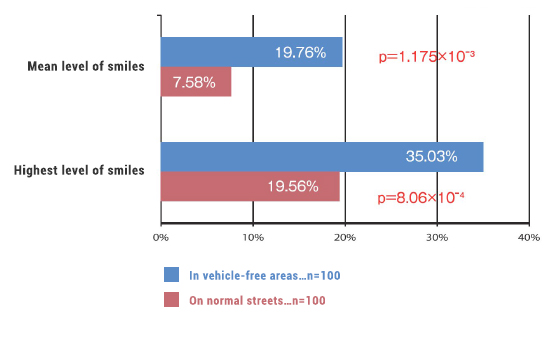


© Copyright Saitama University, All Rights Reserved.